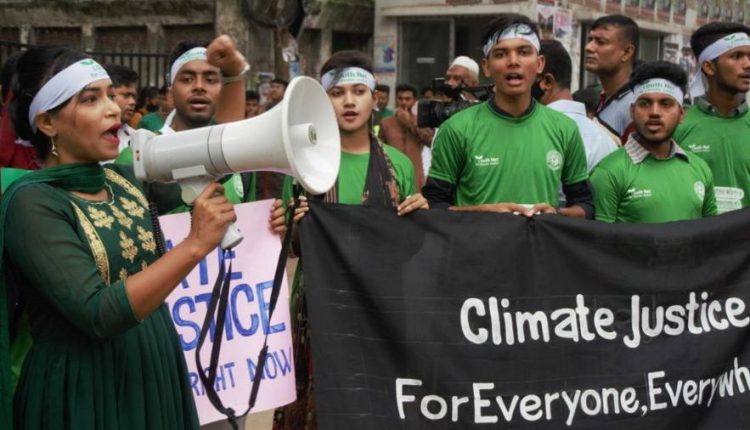Receive free Social affairs updates
We’ll send you a myFT Daily Digest email rounding up the latest Social affairs news every morning.
From cycle paths designed to save lives in the Dominican Republic, to apps mapping areas in Jaipur where it is safe for girls to walk, policies to improve the wellbeing of young people are on the rise in the world’s fast growing urban centres.
As this report and the continuing FT Thriving Cities series highlight, there is an urgent need to improve youth health, education and economic prospects — and there are many promising innovations to help do so. But there are also many gaps, and insufficient efforts to involve young people in developing the programmes they want and need.
The UN-Habitat agency estimates that more than half of the planet’s inhabitants live in urban areas. By 2050, that will have risen to 68 per cent — an additional 2.2bn people, most of them in Africa and Asia. Of the world’s 8bn population, the total number aged under 15 is 2bn.
Their concentration in cities reflects the enormous pull that urban areas have as engines of economic growth and concentrations of talent, resources and youthful energy. But — notably in the “informal” or slum settlements where at least 1bn people now live — they distil some of the greatest problems facing society.
Global harms, including air pollution, traffic accidents and violence, which affect young people’s physical and mental health, are compounded by a lack of access to high quality housing, schools, training and jobs.
Stephen Seidel, senior director for technical partnerships at Habitat for Humanity International, says the UN agency resolved to place a fresh focus this year on improving slum housing: “Among the sustainable development goals, settlements in urban settings were one of the few targets that has regressed since 2015. The problem has only got more severe.”
Good accommodation is a fundamental but unfulfilled human right for many young people and their families. So, too, is adequate healthcare and education. Despite a growth in facilities, free public resources have often failed to reach poorer neighbourhoods, while fee-paying private provision is on the rise.
Poor urban planning is deleterious to wellbeing. Sarah Sabry, urban global lead at Save the Children, which has helped launch the Global Alliance of Cities for Children to champion examples of effective policies, says: “Cities are becoming increasingly hostile to people in general, and young people in particular. We take what’s in Europe for granted: walkability, sidewalks, safe crossings. But most prioritise cars over people.”
Recalling her own childhood in Cairo, she adds: “In the past 20 years, there has been increased segregation, with the expansion of gated communities alongside growing slums. We need to help tackle growing inequality in cities.
“We need to really think about how urban environments work for young people: their rights to participate, and to have a clean, safe, healthy environment with active lifestyles and equal opportunities.” She cites examples including “tactical urbanism” programmes, by which residents close streets to cars at weekends — and sometimes permanently.
One potential tool for change is technology. Greg Munro, head of the Cities Alliance, a partnership fighting urban poverty and promoting the role of cities, stresses the need for cities to adopt not only a “gender lens” and a “youth lens”, but also a “digital lens”, reflecting the scope for digital transformation and empowerment.
Rike Sitas from the African Centre for Cities in South Africa stresses the potential of locally generated innovations. She references “tech-enabled social and cultural life, which sometimes gets overlooked as vital for economies and wellbeing”, including backyard music studios, independent arts studios, and informal festivals.
But she cautions: “While access to smartphones is high, data can be expensive and tech-based learning is not equally distributed. There is a disjuncture between what is being taught and the rate of change in tech capabilities. Teachers from older generations are not equipped to develop curriculum that can catch up.”
One concern is insufficient youth participation in policymaking. However, James Anderson, head of the government innovation programme at Bloomberg Philanthropies, which supports the Bloomberg Cities Network and CityLab content, sees advances from “the progressive era, which put expertise into the hands of technocrats, to today, when public servants recognise their job is not to be experts but facilitators”.
He argues that “the citizen engagement toolkit is expanding before our eyes” with more consultation on policies. Anderson highlights an increase in projects benefiting young people, from digital tools in Mexico City and Vilnius, to a cycling programme in Addis Ababa that politicians hope will make the Ethiopian capital the most child-friendly city in Africa.
Sitas sums up the challenge: “Youth are not often recognised as having agency beyond being troubling or economic actors” — instead, they tend to be regarded as “recipients rather than vital role players”.
Read the full article here

